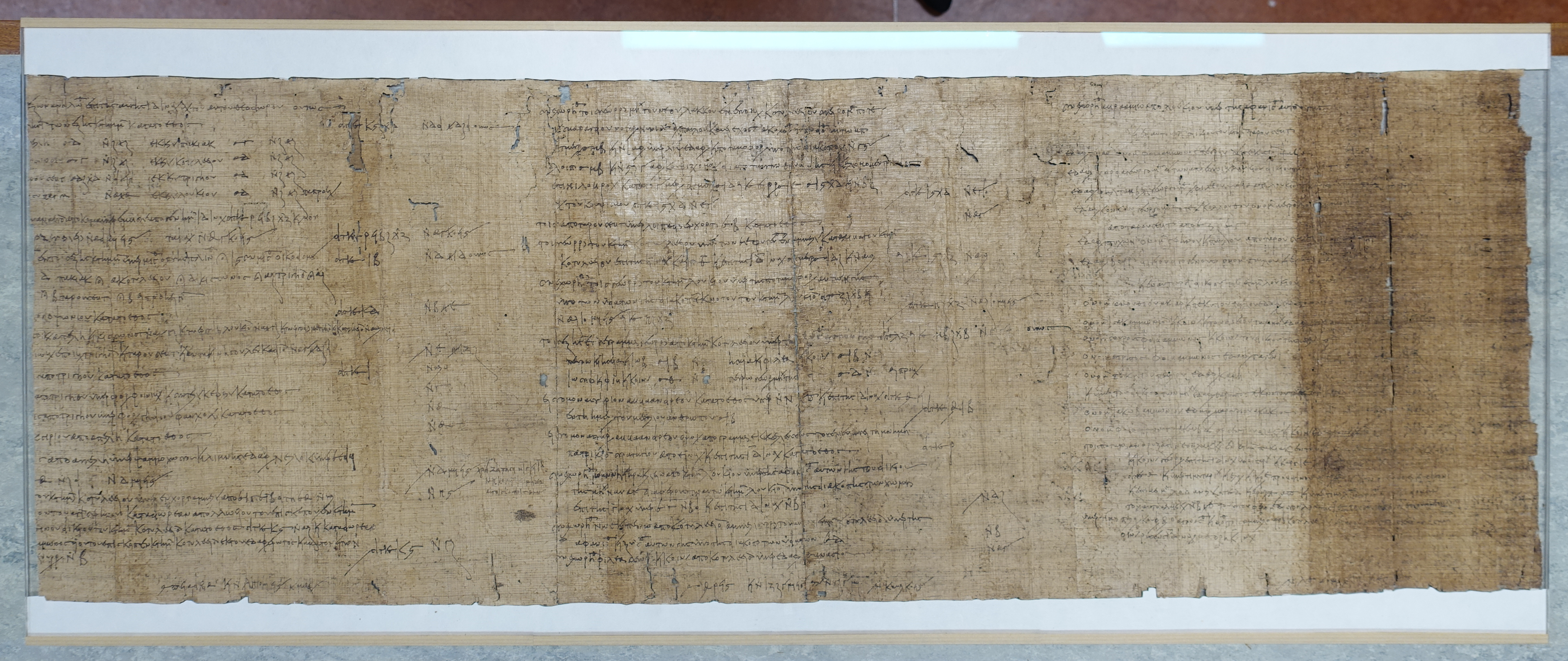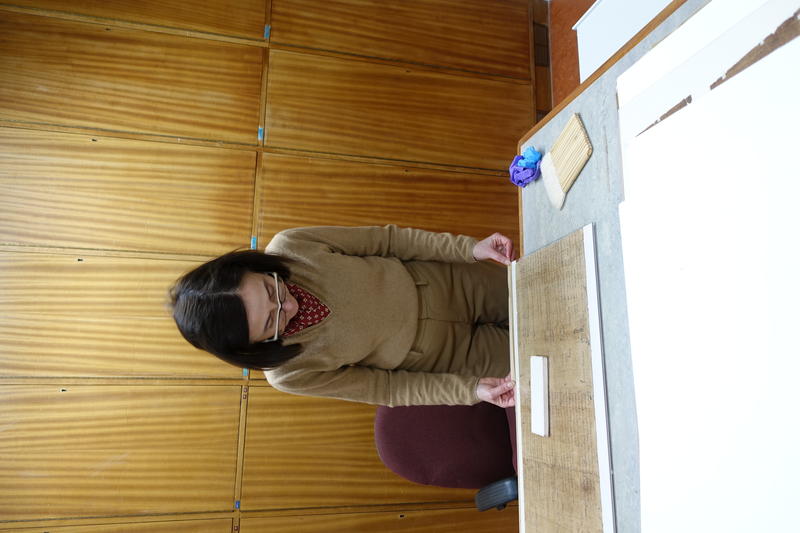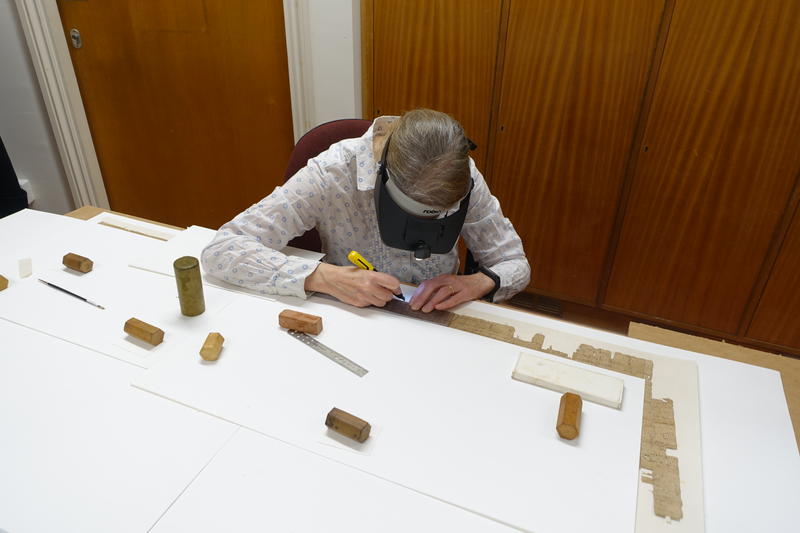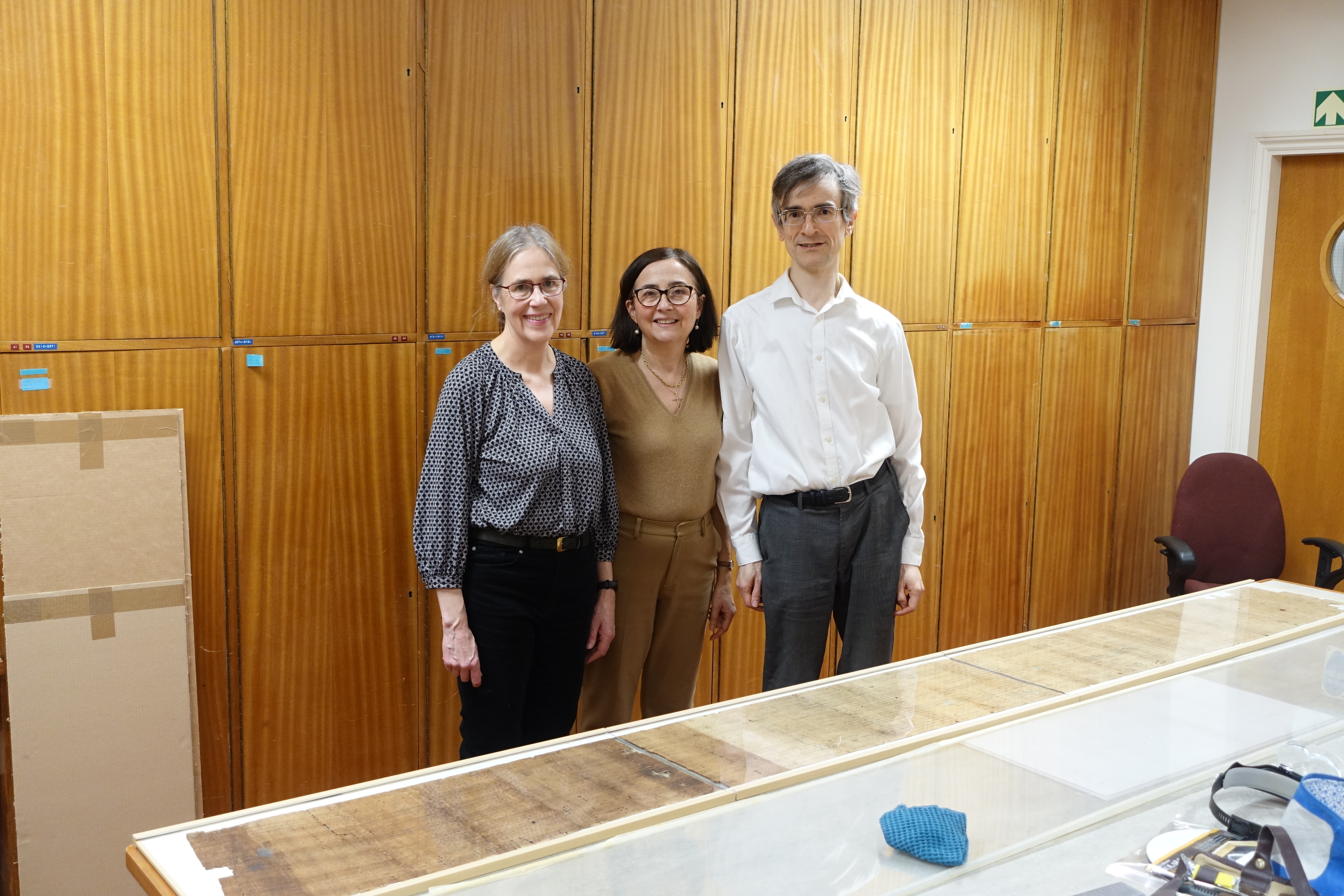Restoring 'The Beast'
P.Oxy. LV 3804–5
By A. Benaissa (22/03/2025)
The papyrus roll published as P.Oxy. LV 3804–5, dating from 566, is one of the most important Greek papyri from Late Antique Egypt. At 2.88 metres, it is also one of the longest preserved, posing significant challenges for its conservation. The roll is informally known as 'the beast' among researchers on the project. With the generous support of the Oxford Centre for Byzantine Research and the EES, the papyrus has now been newly conserved and re-mounted, ensuring its long-term preservation and allowing scholars to consult it more easily.
The papyrus is part of the extensive archive of the ‘Apion’ estate, the best documented senatorial domain from Late Antiquity. It belonged to a wealthy ennobled family whose members held some of the highest offices in Constantinople in the sixth century. At the time of P.Oxy. 3804–5, the estate was under ‘Apion II’, one of the last non-imperial holders of the ordinary consulship in 539. The interior of the roll preserves an annual account of a steward of one of the estate’s rural districts, which comprised about seven villages. It lists in meticulous detail all the revenues collected by the steward over the year 565/6 as well as his expenditure, thus opening a unique window on the minute workings of a large agricultural estate in the sixth century. Besides the usual receipts in wheat and money from estate farmers, the document contains some interesting entries on boatbuilding, irrigation works, and oil manufacture. What is curious is that the expenditure roughly balances out the receipts, which raises the interesting question of where the estate derived its enormous wealth from. This question has received a variety of answers from historians and remains unsettled. The steward’s account was submitted to the estate’s central office in Oxyrhynchus, which explains why the roll was found in the rubbish mounds of the town. After an indeterminate amount of time, the back of the roll was reused by administrators in this central office for a more miscellaneous set of accounts. This text contains some rare and intriguing entries, for example for rent of a synagogue, a mule-cart used by the province’s governor, and scrap-metal sold perhaps to a cuirassier. The papyrus has figured prominently in the lively, and sometimes fraught, debate on the economy of Late Antiquity in recent scholarship and remains one of the key documents of the Apion archive.

The sheer size of the roll—288 × 30 cm—poses a formidable challenge. The papyrus was probably one of the ‘fine rolls three to ten feet long’ from a large haul of Byzantine papyri brought back to Oxford by Bernard Grenfell and Arthur Hunt following their first season of digging at Oxyrhynchus in 1897. It remained unopened until 1981, when it was finally unrolled by Shelagh Jameson. It turned out to be virtually complete, consisting of twenty-two joined papyrus sheets, each 13–14 cm wide. The accounts on both sides were published by John Rea in volume LV of The Oxyrhynchus Papyri in 1988.
Published papyri are routinely conserved between sheets of glass, taped at the edges, but glass was never going to work for a ten-foot beast like P.Oxy. 3804–5. The solution adopted at the time was to place it in Perspex, a material then widely used in major papyrus collections because it is considerably lighter and less easily breakable than glass. In hindsight, however, this turned out to be a problematic choice. The long single frame was unwieldy and virtually impossible to move safely or to consult under a normal microscope. Furthermore, Perspex is notoriously susceptible to scratches, and the sheets used for this papyrus had become badly scratched over decades of handling. The Perspex would bend when lifted, stressing the papyrus, which was not held firmly in place and could easily slide around. Worst of all, there was the danger of static electricity developing between the Perspex sheets, causing potentially serious harm if the housing needed to be opened.


Now, thanks to a grant from the OCBR and matched funding from the EES, the roll has received state-of-the-art conservation treatment and re-mounting from Eve Menei, one of the world’s foremost papyrus conservators. The papyrus, still covered in a layer of dust from the find spot, received a much overdue cleaning on both sides over its whole length, pleats and creases were opened up, and folded and misplaced fibres were put back in their original positions. Obtrusive repairs carried out in the 1980s were found to be deteriorating and replaced using conservation-grade adhesive and tiny inconspicuous strips of Japanese gampi paper. Finally each of the three pieces making up the papyrus was attached to a Japanese paper mount in which a window had been carefully cut to match exactly the outline of the papyrus, and the mounts were secured between sheets of 3 mm Tru Vue Optium Museum Acrylic® glazing, a light, modern material that nearly eliminates reflections, blocks virtually all UV rays, and offers resistance to scratches and shattering and anti-static protection. Aluminium strips above and below keep the glazing from bending when lifted. The three pieces are placed together in a single continuous sequence for display. The re-mounting was carried out with the assistance of paper conservator Celia Withycombe and under the watchful eye of W. Benjamin Henry, the curator of the papyri. Following all this painstaking work, the roll is finally in a condition befitting its importance to scholarship. Every detail is visible with exceptional clarity thanks to the new housing, and it is protected from deterioration through the use of modern materials whose longevity is guaranteed. Now in three frames, it can safely be moved and turned over as required so that interested researchers can study the accounts on both sides. The long-term preservation of this unique witness of a senatorial estate of the sixth century is assured for generations to come.



